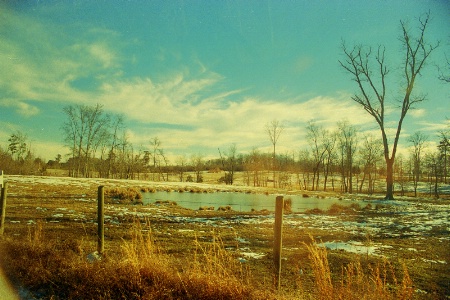
Beverly Joanne Hoover |
|
What Does It Mean to Push Film?
Can someone fully explain in detail what push processing film actually means? How does the LAB do this? A full definition would be most helpful. Then I will know exactly how to achieve this myself. I have some ideas but am not sure.
Thanks very much.
February 09, 2002
|
|
|
John A. Lind |
|
Hi, Pushing film is shooting it at an EI (exposure index) higher than its ISO rating. In doing so, you must push the entire roll, not just parts of it (see remarks below about processing). The common terminology used is Push 1, Push 2, etc. The number refers to how much it has been pushed in "stops." ISO 200 is one "stop" faster than ISO 100, so if I shoot an ISO 100 film at an EI of 200, its "Push 1," at EI 400 it's "Push 2." The next part is film processing. The lab must be told you pushed the film and by how much. A full-service pro lab will have calibrated their equipment and chemistries for push processing, which adjusts time spent in various processing steps, and sometimes tweaks the exact chemistry used also. Pushing film is always a compromise. The most common effects are contrast and graininess increase. Some films are more amenable to being pushed, others less so. Check film data sheets for remarks in them about pushing the film, if there are any, usually found under the "recommended exposure" section. You may also see another term called "pulling" film. This is the opposite of a push in shooting it at an EI slower than its ISO rating (deliberate overexposure). Not nearly as common as pushing, but with some films you can do this also. -- John
February 13, 2002
|
|
|
Jack Hoyt |
|
Pushing is like squeezing the last bit of toothpaste from the tube. Simply it is using a greater amount of sensitivity from the film by increasing the ASA (IE) to higher number. To be able to do this is a matter of increasing the developing time. Sometimes the temperature of the soup. All suppliers can provide you with their recommendations. Remember you will affect the grain and the contrast. With color film you will experience a color shift. It is okay for special affects of unusual circumstances but I prefer to leave well enough alone.
February 13, 2002
|
|
|
Michael F. Harrington |
|
okay, while functionally you are correct, technically you are wrong. "Pushing" film technically refers to the developing process, not exposure. Yes, the term has come to mean under-exposing, but it's not truly the correct term. Just thought I would toss that one in.
October 27, 2002
|
|
|
Li Chin |
|
Pushing means exposing the film as if it had a higher speed than the manufacturer says, then changing the development to compensate. Often when taking photographs under very flat lighting, you will want to increase the contrast of your pictuers, or you may find that the lighting is so poor you cannot use a reasonable aperture and shutter speed combination. Under these conditions you can push your film speed by exposing a 400 ASA film, for example, as if it were 800 ASA. This will effectively double its speed and allow you to use a smaller aperture or faster shutter speed. Afterward, you must increase, or push, development time, to give negatives of normal density. The more you push the film, when exposing and developing, the more contrastly it becomes and the more film grain becomes apparent. You must expect deep shadow areas to print as featureless gray or black, and in mid-tone areas grain will be noticeable.
April 22, 2003
|
|
|
Jack Horner |
|
|
|
|
|

Kodak 200 pushed to 800
Jack Horner
|
|
|
|
No, push processing (also called 'uprating') simply means prolonging the development time, or over-developing the film, usually to compensate for underexposure (or for artistic reasons). It has nothing to do with intentionally changing the speed on the camera. Setting a 400 ISO film to 800 ISO is not pushing the film, it is simply underexposing it.An example would be if you unintentionally underexposed your 400asa film by leaving the asa at 800, or if shooting conditions were less than ideal i.e. low light. You could push the film (additional time in developer) to increase the sensitivity and thus get images with higher contrast and increased grain. Pull processing is the opposite. Under-developing overexposed images i.e. less time in developer.
October 02, 2014
|
|
|
|
Log in to respond or ask your own question.
|